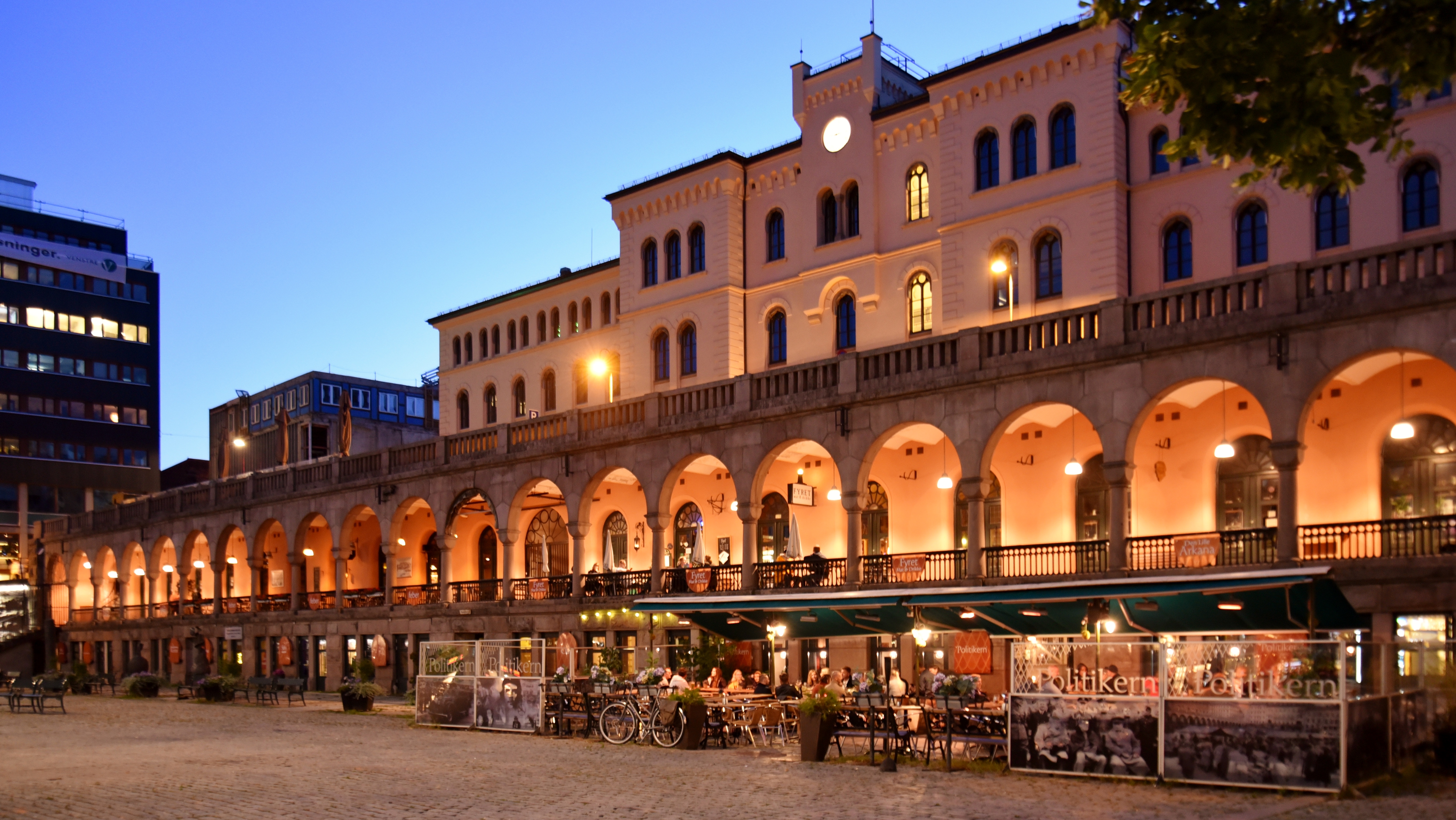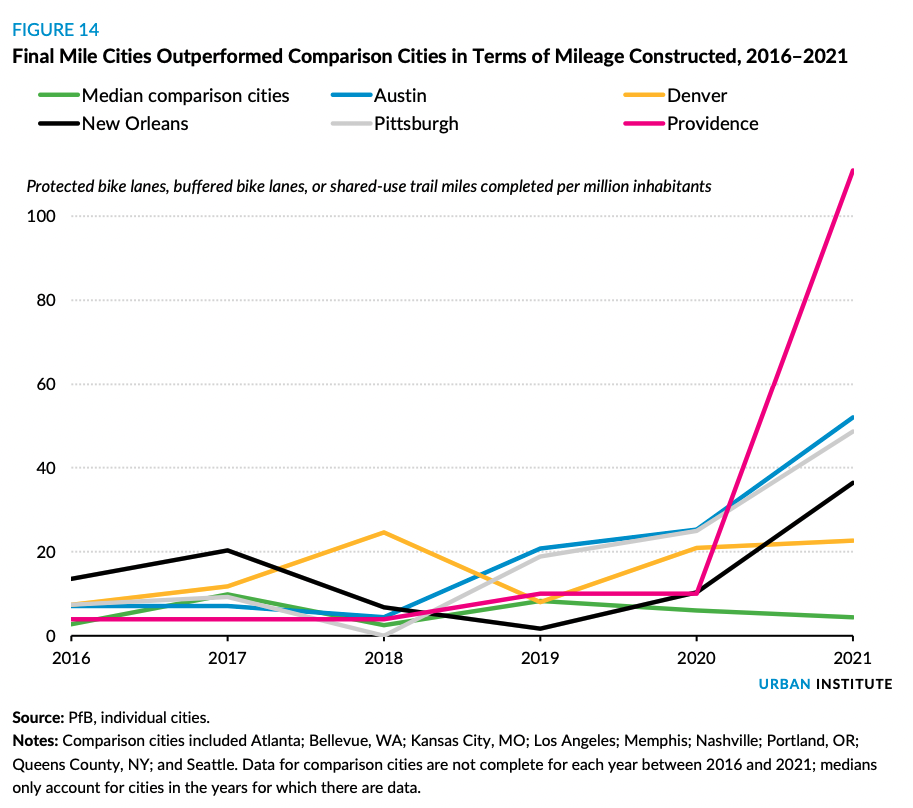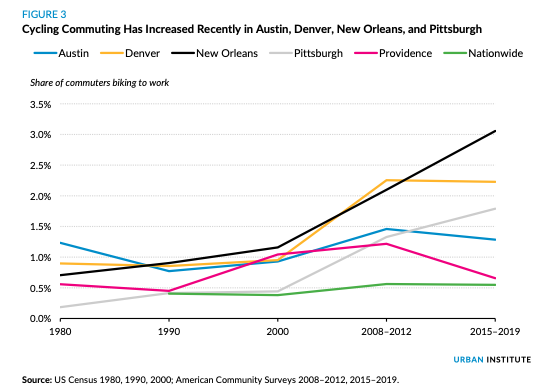In the previous post we examined why, fundamentally, bikes and multi-modal transit have several advantages over cars in urban spaces with regards to traffic, economic cost, safety and more.
With this understanding, we turn our attention to the dramatic changes several cities are making in order to exploit these advantages and provide their citizens with all the benefits a less auto-centric city design can offer. We’ll start with the dramatic sweeping changes in Europe and work our way to the more moderate progress in the U.S.
Before we dive deeper into things, a quick word on references. This post draws from material produced by the “City Beautiful” and “Not Just Bikes” youtube channels. I highly encourage you to check out their material as I’ve enjoyed learning from it.
Europe
Oslo, Norway
In 2017 city leaders in Oslo, Norway announced they would block off large swaths of the city to private passenger vehicles(Beautiful 2020). Such demonstrative actions are rarely easy, even in a nation as committed to its environmental character as Norway — the country plans to be carbon neutral by 2030. In this case, both members of the public and business leaders needed convincing (Wolfe 2018). Thankfully, it would appear at least so far that their change of heart has been rewarded — not only has pedestrian traffic increased in the commercial districts but Oslo was also the only major city to report no pedestrian or cycling deaths during 2019 (Peters 2019; Beautiful 2020)1 . Current research examining how mobility patterns have changed since these measures were put in place show that in some neighborhoods, cars are used for only 1/6 trips and that those who do still drive do so mainly for job or health related reasons(Nenseth, Ellis, and Dale 2021)

Figure 1: Oslo, Norway. Photo by Bahnfrend - Own work, CC BY-SA 4.0, https://commons.wikimedia.org/w/index.php?curid=89736202
While Oslo is clearly ahead of the game, other cities in Europe have also made similar efforts: London, Hamburg, Madrid, Milan and Paris have each renewed efforts to prioritize cycling and pedestrian over cars in city centers (Wolfe 2018; Bikes 2021; Beautiful 2020; Nieuwenhuijsen and Khreis 2016). Perhaps, the city most eager to try and overtake Oslo is Paris, whose city government set the ambitious goal of becoming 100% cyclable by 2026.
Paris, France
In 2016, Mayor Anne Hidalgo oversaw the beginnings of a program called “Paris Respire” or Paris Breathes, which introduced various measures including banning cars from certain areas of Paris on the first Sunday of the month and making public transport and city bicycles free for the day. After the Covid 19 pandemic took off, Mayor Hidalgo’s administration expanded bicycle lanes and has since made even further plans to reduce the number of parking spaces in the city, even going so far as to revamp the famous Champs-Elysees into a more pedestrian and cycle friendly space (Reid 2020; Willsher 2021).
If that seems like a lot of change in a short amount of time, you’d be right. Such rapid change is not without growing pains and (Bikes 2021) documents several issues with the transition, ranging from unclear and inconsistent signage, to infrastructure changes that are less than well thought out. It should be emphasized, however, that this is undoubtedly the right direction to move a city in. In fact, by moving so quickly, Paris has given other cities across the world the opportunity to learn from their mistakes. As we turn our attention to the auto-centric U.S. such lessons will be of the utmost importance, in convincing U.S. drivers to turn off their cars and swing their legs over their bike seats or take a walk.
USA
In the United States, our ability to move towards car-free spaces has been slower. Where European cities have the advantages of several centuries of infrastructure centered around humans walking to which bikes easily adapt, much of the U.S. was built after the advent of the automobile. This led to development patterns that centered around the automobile as the primary mode of transit. Still, there are many cities where substantial progress has been made investing in cycling infrastructure, weakening the dependency on cars and the need for car-dominant spaces. This progress has accelerated as the Covid-19 pandemic fundamentally alters the American relationship with the work office. While there are many cities doing exciting work, we’ll focus on two cities: Austin, TX and Pittsburgh PA, who have both been investing above and beyond other US cities.
Austin, TX
Whether gaining notoriety as a liberal enclave in a very red state or growing economically as the city continues to expand its residential footprint, Austin, TX has gained a lot of attention over the past several years. Publishing several bike plans throughout the past 20 years, the city has made a goal of increasing the share of people walking, biking or taking public transit to work to 50% in 2039. Passing two ballot measures since 2016 has shown Austin is putting its money where it’s mouth is—building real momentum to make cycling a much safer reality (2022).

Further progress in the city has arrived thanks to Austin’s frequent repaving schedule, and their response to COVID-19. By repaving their roads every ten years, as opposed to every twenty like in many states, Austin has been able to bring bike infrastructure to the city faster. Furthermore, in response to the pandemic, Austin installed a protected intersection on Congress Avenue, one of Austin’s most iconic streets that serves an important role in connecting Austin’s downtown to its river walk and other amenities. Even further progress is hoped for with a comprehensive plan re-imagining land use in Austin through the CodeNEXT plan. However, these ideas are still considered contentious and the plan is currently being held up by a lawsuit.
Still, whether more fundamental change arrives sooner or later, Austin has made great strides in providing safer streets for it’s cyclists.
Pittsburgh, PA
Turning our attention north, to the old steel city of Pittsburgh, we find more good news. As one of five cities participating in the “Final Mile” program (along with Austin), Pittsburgh has committed to investing $22 million to support bike investments. The proposed investments aim to construct 60 miles of new or upgraded bikeways, half of which would be protected – an extremely important feature for attracting current and new bike riders.

This investment brings Pittsburgh that much closer to it’s Bike+ goal of 123 miles of new on-street bike facilities2 by 2030 and it’s number one goal of reducing the number of traffic accidents and fatalities to zero. While this doesn’t put Pittsburgh at the front of the pack in terms Of new bike infrastructure, it certainly helps the city keep pace as the cycling ridership in the grows rapidly.

From Autos to Bikes and Beyond
As mentioned in (Freemark et al. 2022), making these investments and transitions from an auto-centric infrastructure to a more multi-modal, bike friendly infrastructure is not easy. City governments, citizen advocates and non-profits all have to work together to bring about the kind of change that is needed to make cycling a safer and realistic form of transit across the city. In the next post, we’ll examine research that is trying to make this work easier, creating strategies to make it easier to identify how and where to best invest in cycling infrastructure.
Acknowledgements
Thanks to Paul Haluszczak and Robert Svoboda for reading and offering comments on this article.